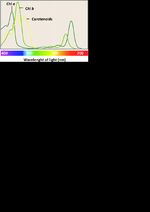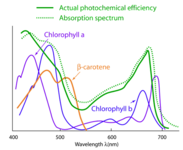Cody
Vice President
Staff member
Administrator
Moderator
Content Moderator
Board Member
Supporting Member
This is a subject that came up in conversation online with fellow reefers, and I wanted to make my points in this thread. Please feel free to push back on my points, as I want my understanding to be more precise. I've had this conversation a handful of times, but never written it down, so here it is!
Let’s say I am going to teach you how to bake a lasagna in the oven. If I told you to cook it at 350 degrees, then what’s your next question. “How long?”, of course! PAR (Photosynthetically Active Radiation) is a measurement of (roughly) visible photon radiation hitting a given surface area in a certain time frame. For example, how many photons per second per square inch. In the analogy, PAR is the temperature. A coral getting hit with your lights at full blast for five hours will receive the same amount of photon radiation that the same coral would receive from your lights at half power for ten hours. So, simply asking what PAR corals are grown under already doesn’t seem like a good measurement of light.
Clorophyll A and B, which provide 95%+ of the amino acids, proteins, carbohydrates, etc your corals use to grow, are no different than the Chlorophyll in the grass and trees in your yard. The reason your grass and tree leaves are green is because Chlorophyll uses the blue and red light from the spectrum, and reflects the green light back to your eyes. It simply doesn’t need it (Example Y and Z, I don't think you need a picture of grass to know it's green but I like pictures, it adds colors, and makes this post seem like I know what I'm talking about). Corals have zooxanthellae, which do another layer of function that plants don’t have, but that’s a whole different conversation (long story short, the zooxanthellae provide the sunscreen and the colors you enjoy seeing). Blue is used much more efficiently than red (Exhibit A), which is why those Mary Jane grow lights have a 5+:1 ration of red to blue LEDs. You have to spam it hard with the red spectrum to get much for it, whereas the Chlorophyll starts cranking out energy very easily with the blue spectrum.
Example Y:

Example Z:

Example A:

The next issue arrives in the fact that PAR meters are not spectrum specific. For instance, you can hit 350 PAR using a green light, when it will do basically nothing for your grass, trees, nor corals. In addition to PAR and duration, you need to understand PUR (Photosynthetically Usable Radiation). Trial: put two of the same coral in the same tank with the same flow, nutrients, and PAR. However, one coral is getting hit with 300 of pure blue spectrum, versus the other getting hit with 300 PAR of a 50/50 blue and white mix spectrum. The chlorophyll of the coral under the pure blue light is getting hit with a spectrum and intensity that is optimized for photosynthesis. The one getting hit with the spectrum that’s a 50/50 blend of blue and white light (white has blue and red in it as well) is getting hit with maybe 60-80% of the intensity of actual usable spectrum that the coral under all blues is getting, despite being under an identical PAR reading. Even if both lights run for the same duration, the coral under the blue lights is getting far more PUR than the one under “full spectrum” lights.
Couple these arguments with the fact that corals have spent hundreds of thousands of years evolving in an environment that’s completely devoid of anything but pretty much the blue spectrum (Example B, keep in mind the average depth of the Great Barrier Reef is 35 meters or 115 feet. Also remember that these pipes don't create the color. They simply absorb certain spectrums and reflect the rest. For instance, a red pipe would absorb every part of the spectrum except red then reflect the red. When a pipe is red at surface level, and then turns black when submerged, it's because there's no red light to reflect) of visible light, which is what Chlorophyll is hard wired to utilize, and I think that not only is PAR a useless measurement of light unless you also look at duration, but that PAR and duration are useless without understanding the spectrum of your light as well.
Example B:
Personal Opinion: Yes, this is an argument that "full spectrum" light serves more or less no purpose for coral health. It's just to make us happy with seeing all the different colors in our tank, which I wouldn't trade for the world. It's a luxury, ornamental hobby at the end of the day, and if you don't like the look of your tank then don't do it. However, I have yet to encounter any evidence that would support the idea that a "full light spectrum" is beneficial for corals. The full spectrum argument very quickly falls into what I call an "Eskimos In Alaska" argument, which I think I wrote an article on about a year or two ago. I can't find it, so maybe I didn't make the thread. I'll have to do so. Either way, I'm interested in your opinions on the topic. Am I insane? Am I trying to sell a product?! Who knows! Only those that buy my product that I haven't come up with yet will know! Mwahaha
Let’s say I am going to teach you how to bake a lasagna in the oven. If I told you to cook it at 350 degrees, then what’s your next question. “How long?”, of course! PAR (Photosynthetically Active Radiation) is a measurement of (roughly) visible photon radiation hitting a given surface area in a certain time frame. For example, how many photons per second per square inch. In the analogy, PAR is the temperature. A coral getting hit with your lights at full blast for five hours will receive the same amount of photon radiation that the same coral would receive from your lights at half power for ten hours. So, simply asking what PAR corals are grown under already doesn’t seem like a good measurement of light.
Clorophyll A and B, which provide 95%+ of the amino acids, proteins, carbohydrates, etc your corals use to grow, are no different than the Chlorophyll in the grass and trees in your yard. The reason your grass and tree leaves are green is because Chlorophyll uses the blue and red light from the spectrum, and reflects the green light back to your eyes. It simply doesn’t need it (Example Y and Z, I don't think you need a picture of grass to know it's green but I like pictures, it adds colors, and makes this post seem like I know what I'm talking about). Corals have zooxanthellae, which do another layer of function that plants don’t have, but that’s a whole different conversation (long story short, the zooxanthellae provide the sunscreen and the colors you enjoy seeing). Blue is used much more efficiently than red (Exhibit A), which is why those Mary Jane grow lights have a 5+:1 ration of red to blue LEDs. You have to spam it hard with the red spectrum to get much for it, whereas the Chlorophyll starts cranking out energy very easily with the blue spectrum.
Example Y:

Example Z:

Example A:

The next issue arrives in the fact that PAR meters are not spectrum specific. For instance, you can hit 350 PAR using a green light, when it will do basically nothing for your grass, trees, nor corals. In addition to PAR and duration, you need to understand PUR (Photosynthetically Usable Radiation). Trial: put two of the same coral in the same tank with the same flow, nutrients, and PAR. However, one coral is getting hit with 300 of pure blue spectrum, versus the other getting hit with 300 PAR of a 50/50 blue and white mix spectrum. The chlorophyll of the coral under the pure blue light is getting hit with a spectrum and intensity that is optimized for photosynthesis. The one getting hit with the spectrum that’s a 50/50 blend of blue and white light (white has blue and red in it as well) is getting hit with maybe 60-80% of the intensity of actual usable spectrum that the coral under all blues is getting, despite being under an identical PAR reading. Even if both lights run for the same duration, the coral under the blue lights is getting far more PUR than the one under “full spectrum” lights.
Couple these arguments with the fact that corals have spent hundreds of thousands of years evolving in an environment that’s completely devoid of anything but pretty much the blue spectrum (Example B, keep in mind the average depth of the Great Barrier Reef is 35 meters or 115 feet. Also remember that these pipes don't create the color. They simply absorb certain spectrums and reflect the rest. For instance, a red pipe would absorb every part of the spectrum except red then reflect the red. When a pipe is red at surface level, and then turns black when submerged, it's because there's no red light to reflect) of visible light, which is what Chlorophyll is hard wired to utilize, and I think that not only is PAR a useless measurement of light unless you also look at duration, but that PAR and duration are useless without understanding the spectrum of your light as well.
Example B:
Personal Opinion: Yes, this is an argument that "full spectrum" light serves more or less no purpose for coral health. It's just to make us happy with seeing all the different colors in our tank, which I wouldn't trade for the world. It's a luxury, ornamental hobby at the end of the day, and if you don't like the look of your tank then don't do it. However, I have yet to encounter any evidence that would support the idea that a "full light spectrum" is beneficial for corals. The full spectrum argument very quickly falls into what I call an "Eskimos In Alaska" argument, which I think I wrote an article on about a year or two ago. I can't find it, so maybe I didn't make the thread. I'll have to do so. Either way, I'm interested in your opinions on the topic. Am I insane? Am I trying to sell a product?! Who knows! Only those that buy my product that I haven't come up with yet will know! Mwahaha












